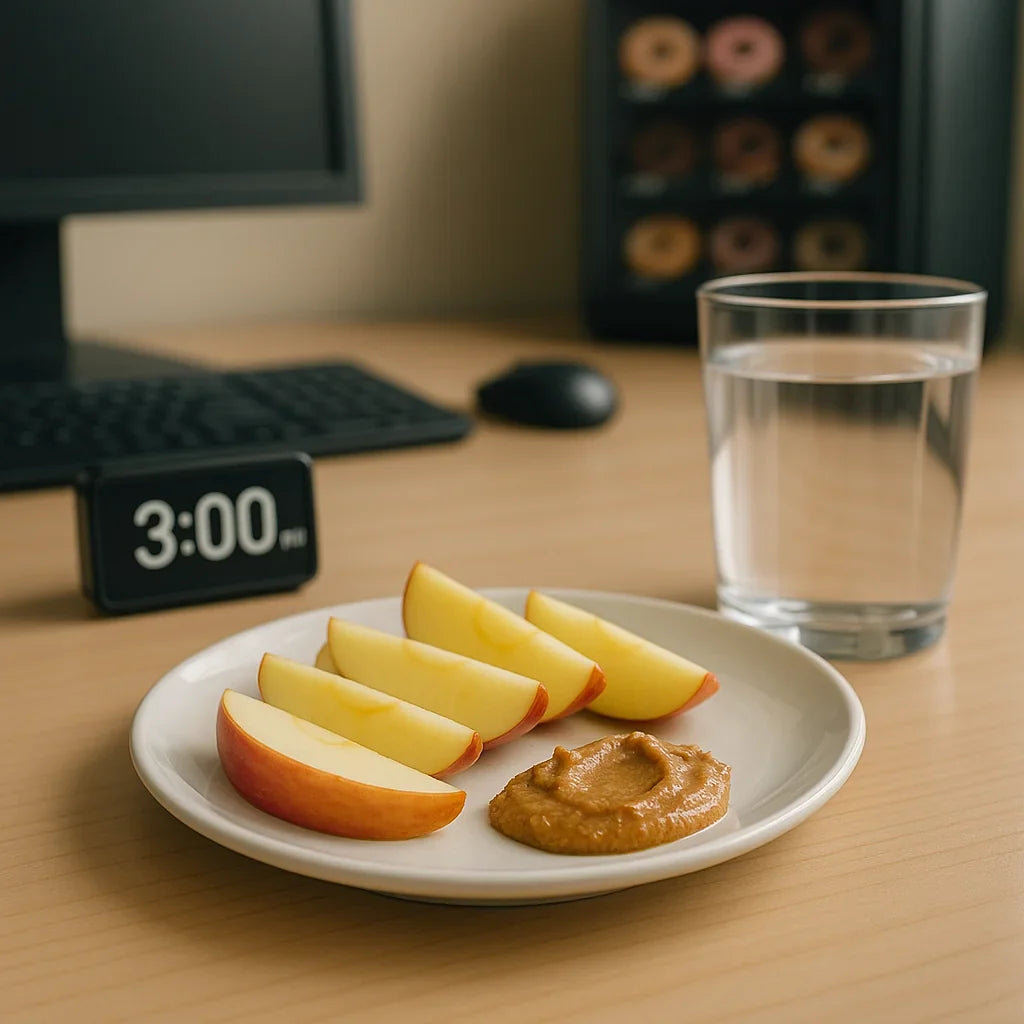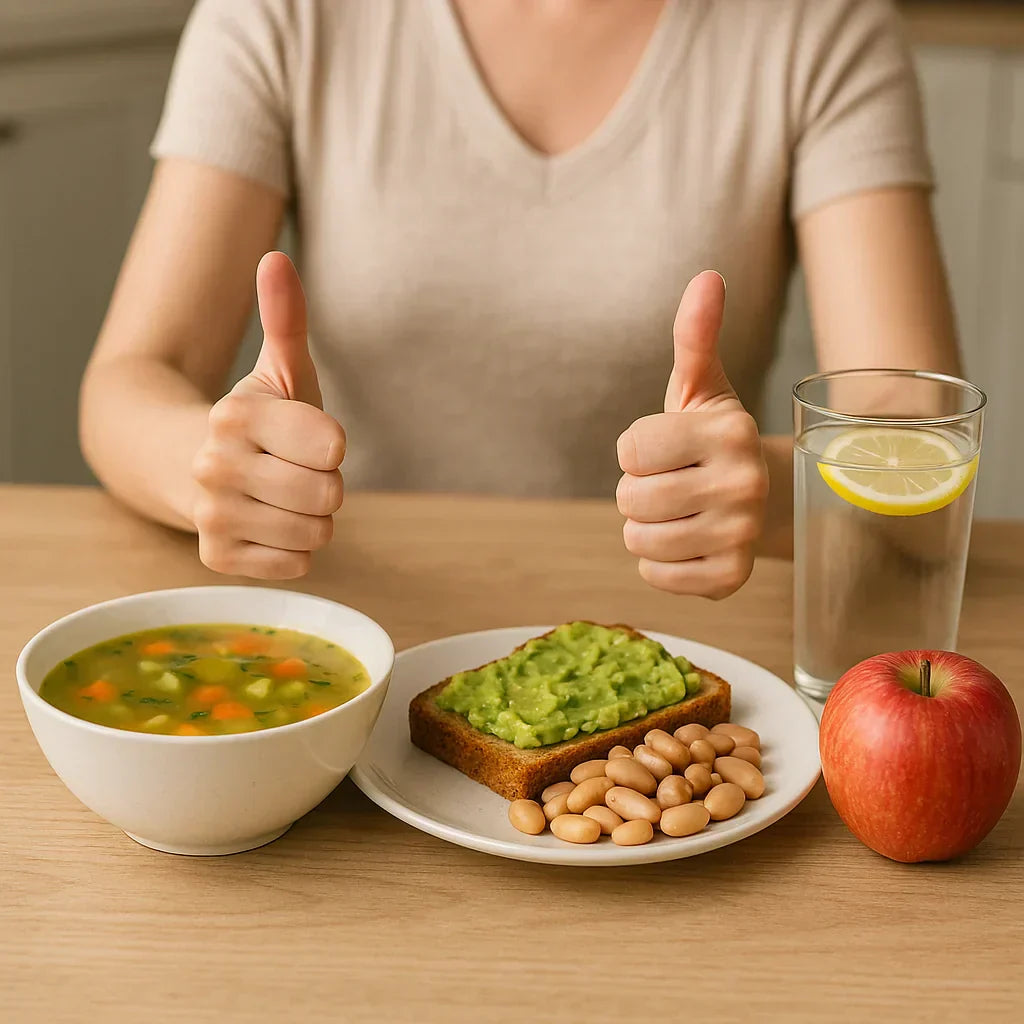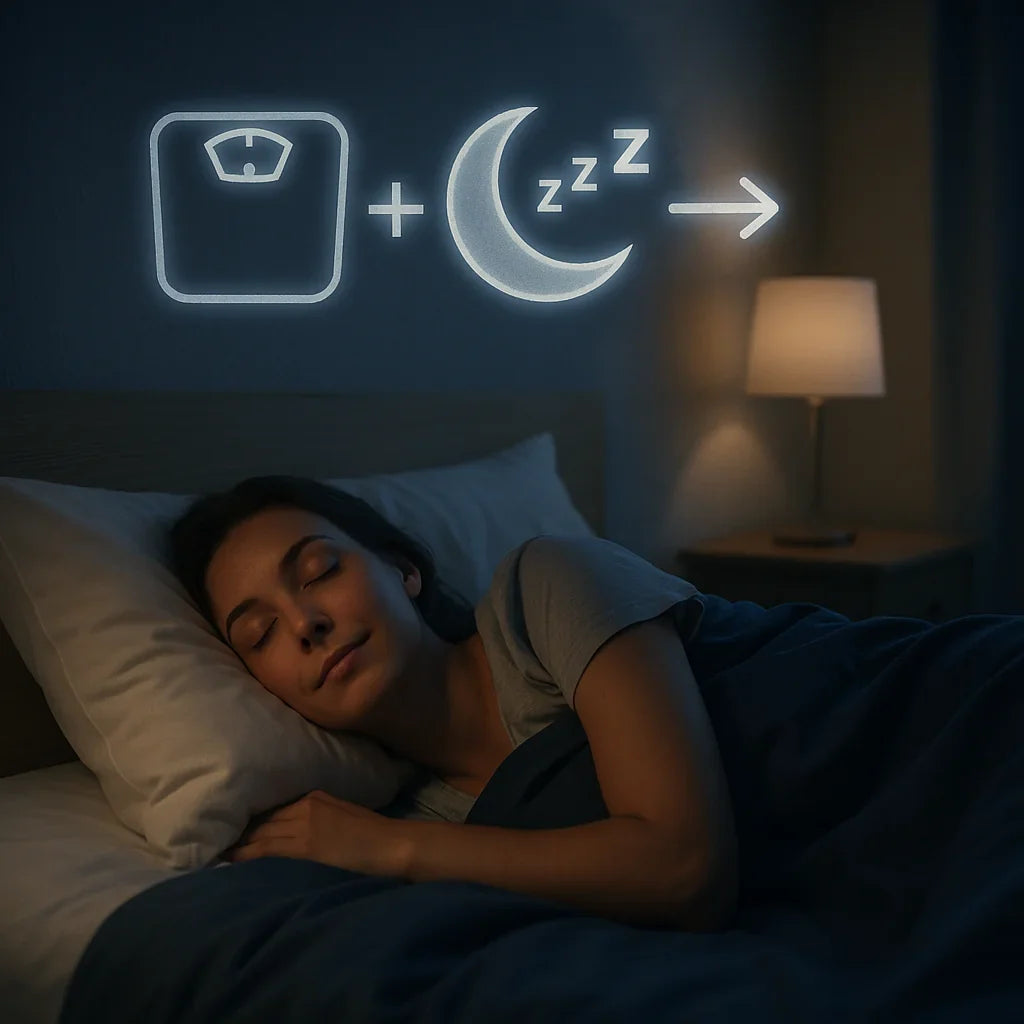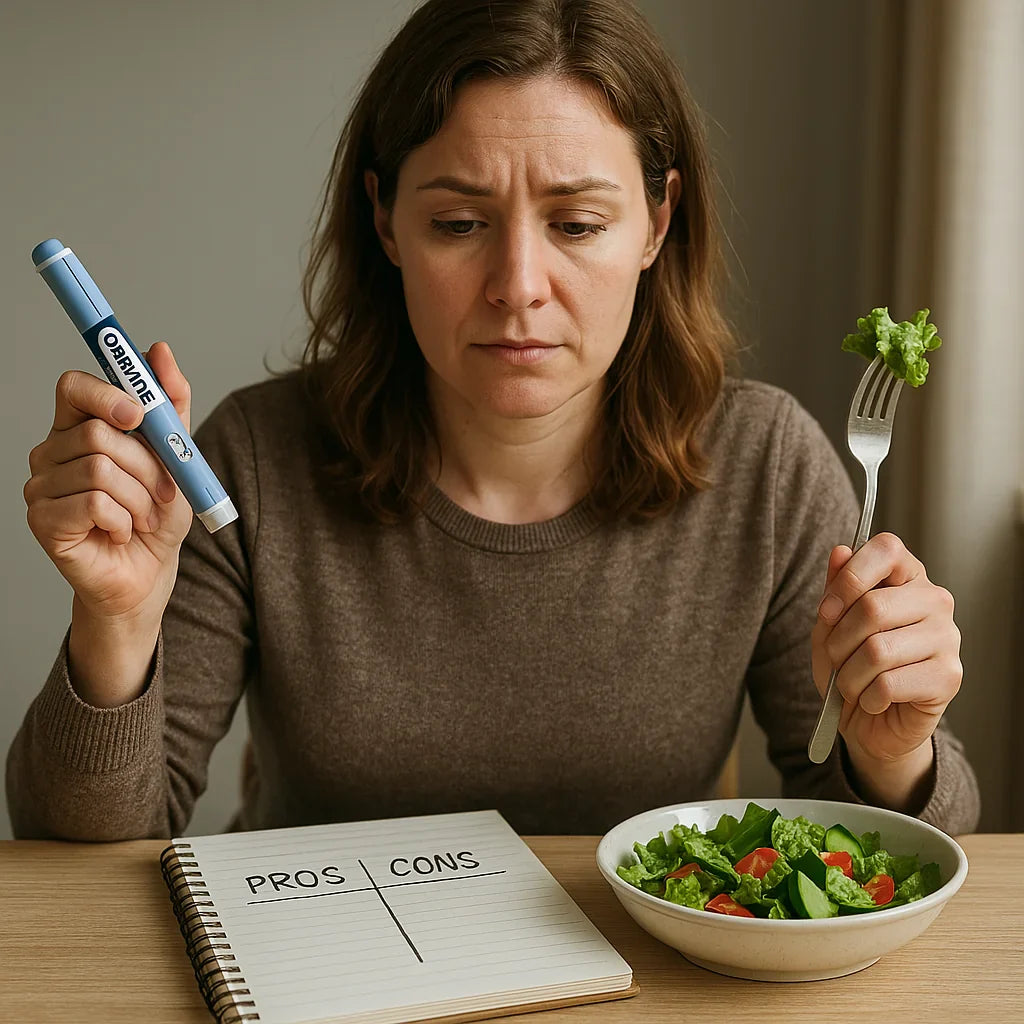Conquer Cravings: How GLP-1 and Balanced Blood Sugar Curb Snacking

Struggling with sugar cravings or late-night snacking? The secret to conquering them lies in your biology. Learn how boosting GLP-1 and keeping blood sugar stable can eliminate those pesky cravings and keep you in control of your diet.
Cravings can feel like an uphill battle. One minute you’re committed to eating healthy, the next you’re rummaging for cookies. It’s important to know: cravings are not about lack of willpower – they’re often driven by hormones and blood sugar swings. By addressing these root causes, you can dramatically reduce cravings and spontaneous snacking.

Why Do We Crave?
Cravings, especially for sugary or carb-rich foods, typically stem from one (or more) of these:
-
Blood Sugar Dips: After a high-carb meal or snack, your blood sugar might spike and then crash. When it’s low, your brain screams for quick energy – sugar! This is a physiological urge, not just “I love sweets.” It’s your brain ensuring you survive.
-
Emotional/Stress Triggers: Cortisol from stress can make you crave comfort foods. Also, dopamine (the reward neurotransmitter) plays a role – sweet and fatty foods give a quick dopamine hit, so if you’re bored or unhappy, you might seek that out.
-
Learned Habits: Sometimes it’s just routine – e.g., always having dessert after dinner or popcorn with a movie, your body starts expecting it like clockwork.
-
Nutrient Deficiencies or Real Hunger: If you under-eat or skimp on protein, your body might drive you to high-calorie foods later. Or specific deficiencies (like magnesium) can manifest as chocolate cravings, since chocolate is high in magnesium.
GLP-1: The Cravings Tamer
We’ve talked a lot about GLP-1, but in context of cravings: GLP-1 not only makes you feel full, it also interacts with the brain’s reward system. When GLP-1 receptors in the brain are activated, the pleasurable response to highly palatable foods (like sweets) can diminish. This is partly why people on GLP-1 medications often report reduced cravings for junk food or alcohol. Naturally boosting GLP-1 (through protein, fiber, etc.) can help replicate some of that effect. Basically, if your body is in a fed, satisfied state hormonally, the brownie calling your name gets a lot quieter.
Balanced Blood Sugar: No Highs, No Lows = Fewer Cravings
Preventing the extreme peaks and troughs in blood sugar is crucial. If you avoid the deep “low” blood sugar state, you’ll avoid that urgent craving signal. Key ways to do this:
-
Don’t eat naked carbs: Always pair carbohydrates with protein or fat. For example, instead of just crackers (which turn quickly to glucose), have some cheese or hummus with them. Instead of just a banana, have some almond butter on it. This slows the absorption of glucose.
-
Consider Lower Glycemic Options: Choose brown rice over white, whole fruit over juice, steel-cut oats over sugary cereal. These swaps lead to a slower, smaller rise in blood sugar. It means more sustained energy and less reactive hunger.
-
Regular Meal Patterns: It might help to eat smaller meals every 3-4 hours if you find long gaps trigger ravenous cravings. On the other hand, some do well with 3 solid meals and no snacks – this is individual. The goal is to prevent both incessant snacking (which can keep insulin high) and over-hungry states. Find the pattern where you feel alert and stable.
-
Include Healthy Fats: A bit of fat (avocado, nuts, olive oil) in a meal lowers the glycemic impact of the carbs and provides satiety. For instance, adding olive oil to a pasta with veggies will make it more filling and blunt the blood sugar spike compared to a fat-free pasta dish.
Tactical Tips to Kill a Craving
Even with good habits, cravings will pop up occasionally. Here’s how to handle them in the moment:
-
The 15-Minute Rule: When a craving hits, wait 15 minutes before indulging. During that time, drink a glass of water or tea. Often, the craving will pass or diminish. Cravings are like waves – they peak then fade if you don’t give in immediately.
-
Have a Go-To Option: Identify a few “legal” treats that are much healthier but still satisfying, and keep them handy. Craving chocolate? Maybe dark chocolate (85%) hits the spot with less sugar, or a few chocolate-covered almonds. Craving ice cream? Keep Greek yogurt and berries in the fridge and maybe a drizzle of honey – it can mimic that creamy sweetness. By having an alternative, you satisfy the urge in a controlled way.
-
Chromium or Cinnamon: Some supplements and spices can improve blood sugar control. Chromium picolinate is known to reduce cravings in some people by aiding insulin function. Cinnamon (Ceylon cinnamon is best) can make cells more sensitive to insulin. Sprinkling cinnamon on your latte or oatmeal can slightly help manage the sweet tooth. These aren’t magic bullets, but tiny aids.
-
Brush Your Teeth or Chew Gum: This one’s simple – the minty fresh feeling can kill the desire to eat something else (ever tried drinking orange juice after brushing? Yuck!). Chewing sugar-free gum can also occupy your mouth and give a sweet taste without real sugar.
-
Address Emotional Cravings Differently: If you notice you’re eating out of stress or boredom, try to put a pause and swap the action. Feeling stressed? Do 10 minutes of yoga or step outside for fresh air. Bored at 9pm? Take a relaxing bath or read something engaging. Breaking the association of “feeling X -> eat Y” is huge.
Make Cravings a Minor Player
By consistently keeping your blood sugar stable and your meals filling, you’ll find that intense cravings become rarer. And when they do come, you’ll have strategies to handle them without derailing your progress. It’s about being proactive (through diet structure) and having reactive tools (craving hacks).
The ultimate goal is not to rely on willpower 24/7 – that’s exhausting. Instead, set up your lifestyle so that willpower isn’t as needed. By mastering your internal environment (hormones, blood sugar), you’ll naturally want the junk less. It’s such a relief when you realize, “Hey, I didn’t even crave dessert today, I feel satisfied!” That’s when you know you’ve conquered cravings – not by fighting yourself, but by working with your biology.
And remember the Beyond GLP-1 mantra: sustainable changes over quick fixes. Conquering cravings is a perfect example. Crash diets often fail because they ignite cravings like crazy. But a balanced, hormone-aware approach will keep those in check, leading to steady progress. So, nourish yourself smartly, and watch those cravings fade into the background as you take control of your eating with confidence.



